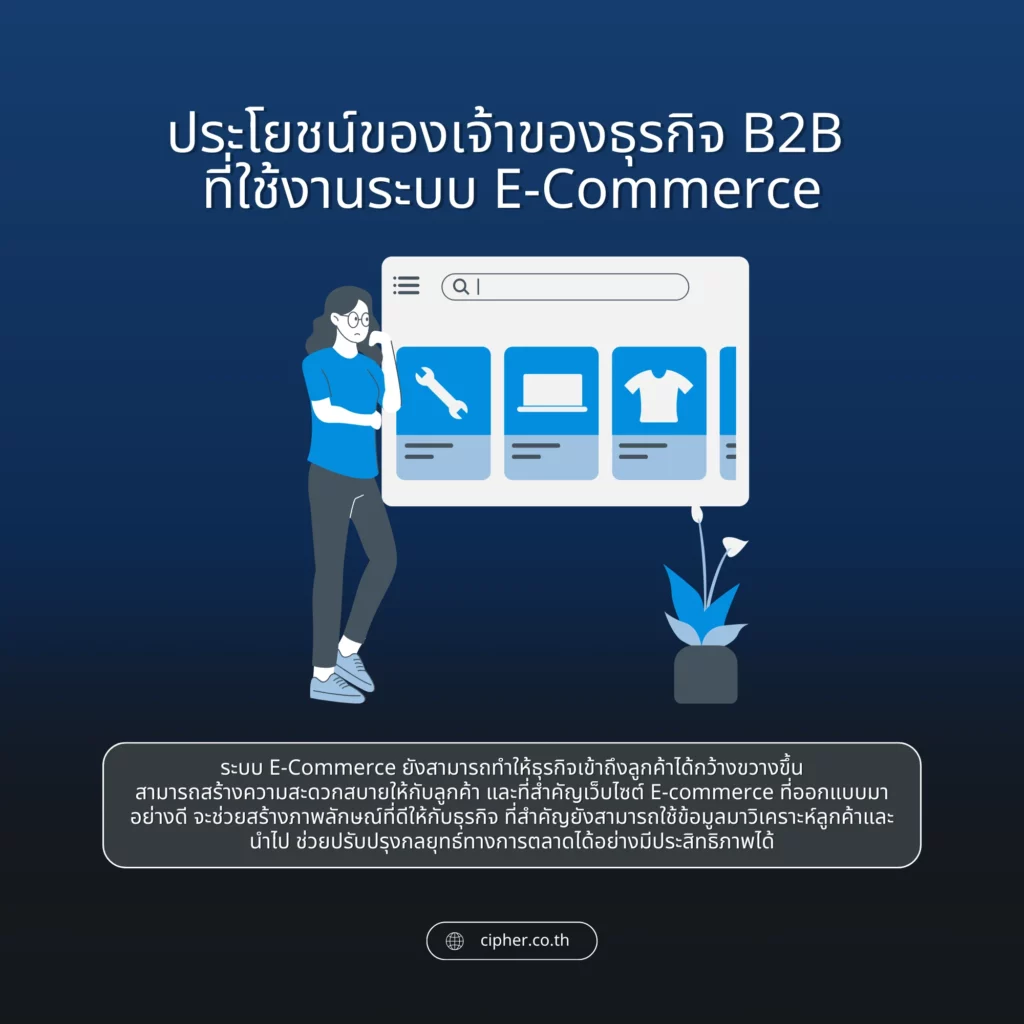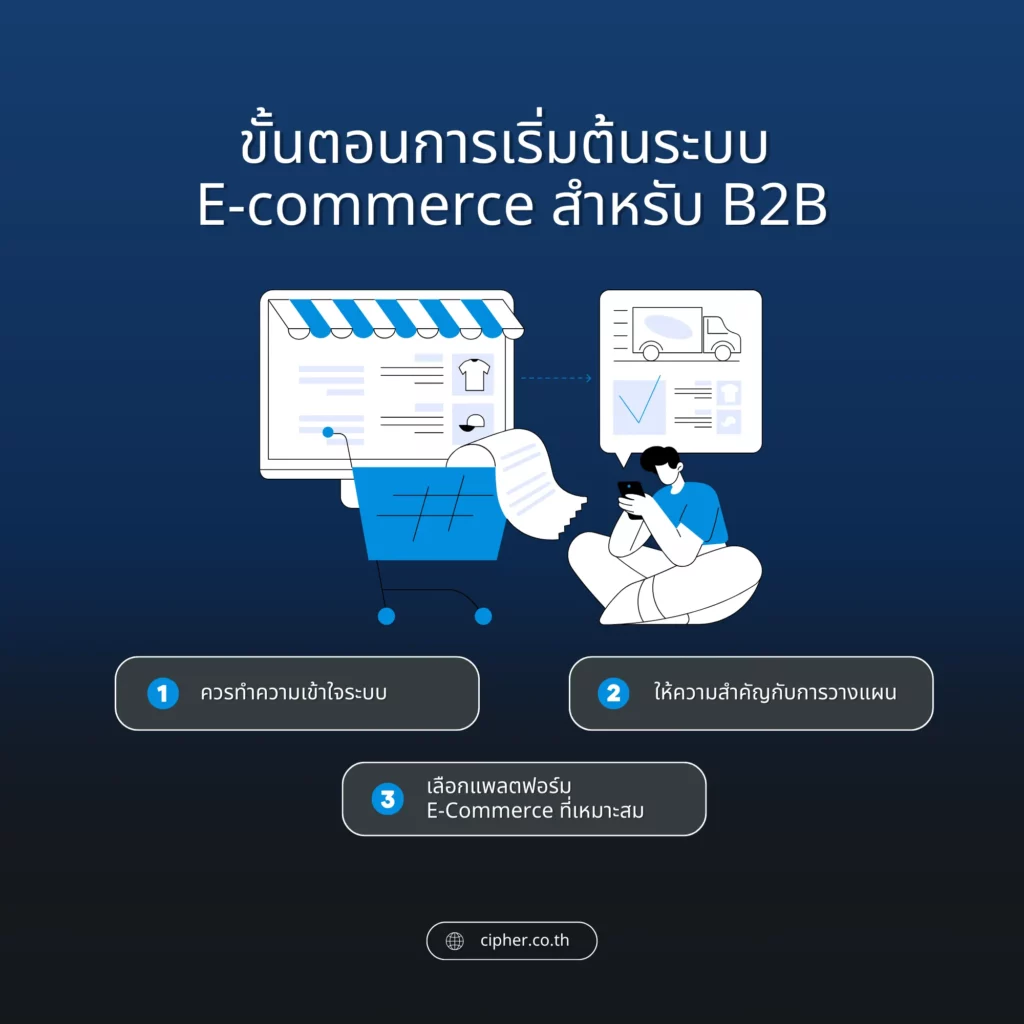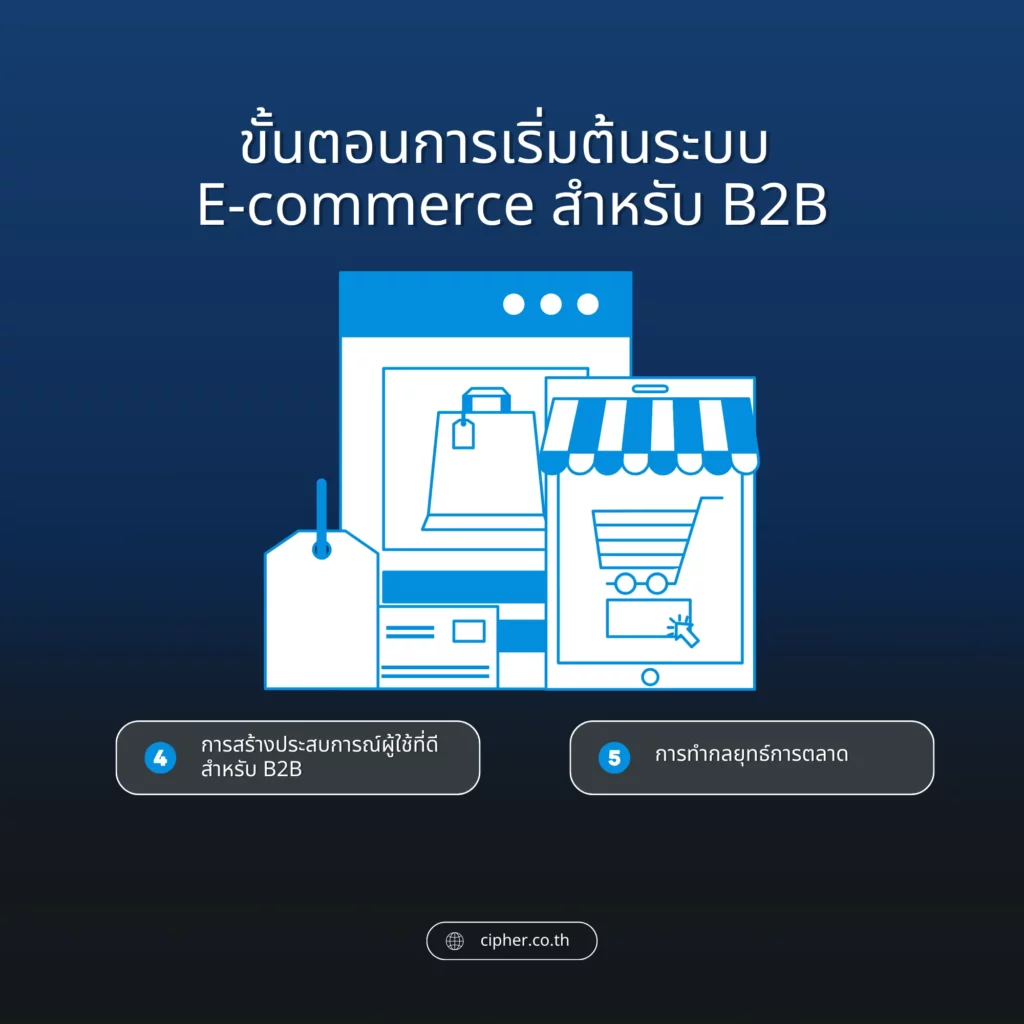Table of Contents
Business Owner's Manual: Getting Started with E-Commerce for B2B
For business owners, it takes a lot of effort to compete and compete in the market, especially for B2B businesses that need to start building new sales channels with E-Commerce, but don’t give up hope. Starting with E-Commerce for B2B will no longer be difficult. This article will be “The Guide for Business Owners.” That want to get started with the use of E-Commerce for B2B so business owners can deploy it immediately.
Benefits of B2B Business Owners Using E-Commerce

Existing business owners, particularly B2B businesses that traditionally trade or market, may lose their competitors and lose their online sales opportunities. Therefore, the transition to E-Commerce will allow business owners to increase their sales efficiency.
E-Commerce can also provide businesses with broader reach, convenience for customers, and more importantly, the well-designed e-Commerce website will create a positive image for businesses. More importantly, data can be used to analyze customers and improve marketing strategies.
Business Owner’s Manual: E-commerce startup process for B2B

1. Business owners should understand the E-Commerce system for B2B.
E-Commerce for B2B differs from E-Commerce for B2C in that B2B focuses on selling inter-business products or services, such as manufacturers selling products to dealers or sales agents. This system requires more sophisticated features such as customer-level pricing, bulk order management. As a result, it is necessary to study the application of E-Commerce platform features to suit the business model.
2. Business owners should focus on planning and having clear goals.
E-Commerce pre-provisioning for B2B is critical to enabling seamless operation. Business owners should start with market analysis and target customer requirements to determine the appropriate system direction and features. Logistics planning, inventory management and payment systems should also be prioritized. As these affect customer confidence, E-Commerce planning for B2B should consider the following.
- Pricing structure: Pricing is important because B2B is often priced according to conditions such as volume of orders or contracts with customers.
- Integration with other systems: E-Commerce should be connected to ERP, CRM and inventory management systems to help streamline sales and order management processes.
- Multi-level user management: Because B2B often has enterprise customers, E-Commerce should support multiple levels of user management within the same organization so that each user can access different rights such as requesting a quote or checking the status of an order.
3. Select the appropriate E-Commerce platform.
Choosing an E-Commerce platform that meets the needs of B2B business is an important step. Platforms with a wide range of features should be selected to support B2B sales, such as Shopify Plus or Magento, each with a different focus depending on size and business model.
Shopify Plus comes with Shopify Implementation Service for businesses that need customizable systems and expandable future growth. Shopify Plus offers B2B specific features such as bulk order management, B2B pricing and easy integration with other ERP systems, and Magento, another E-Commerce platform. Ideal for large businesses that require flexibility and feature customization.

4. Creating a Good User Experience for B2B
In addition to choosing the right platform, creating a good user experience (UX) is critical to helping businesses maintain customers and increase sales. The E-Commerce system for B2B should be easy to use, efficient product search function, detailed product information and design to meet all types of devices.
5. Marketing Strategy for E-Commerce B2B
Marketing for E-Commerce B2B differs from B2C in that B2B deals with multiple buyers’ decisions and longer decision-making processes. Creating quality content such as articles or videos that provide in-depth information about products or use of products will help build customer confidence.
- Creating high-quality content: Articles with in-depth information about business or product use, such as user manuals or case studies, help customers make decisions more easily.
- Establishing long-term customer relationships: Providing good after-sales service and communicating with customers on a regular basis, such as sending new product information e-mail, will help build customer loyalty.
After implementing E-Commerce for B2B, business owners should continuously measure their performance through analytical tools such as Google Analytics or E-Commerce platform metrics themselves to better understand customer behaviour and improve their systems.
Conclusion
Starting with E-Commerce for B2B requires good planning and selection of the right platform to enable efficient system operation and meet customer needs. Businesses should consider creating a good user experience and appropriate marketing strategies to increase sales opportunities. Furthermore, continuous system measurement and improvement will enable business growth.
So you ask yourself, how do you market your business and manage your business and plan? ? If you don’t want to miss out on a good opportunity to get ahead of your competitors and increase your E-Commerce sales performance, B2B can get expert advice and experience from E-Commerce today!





